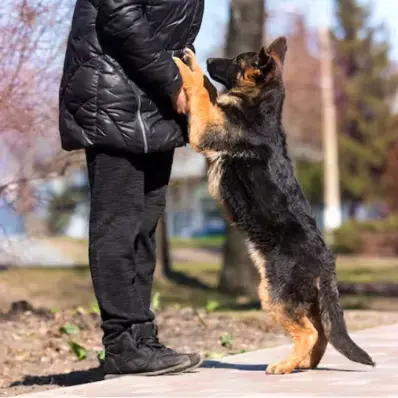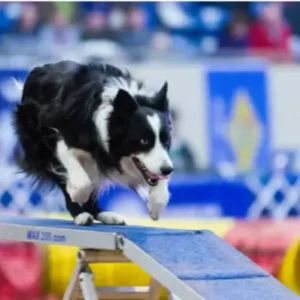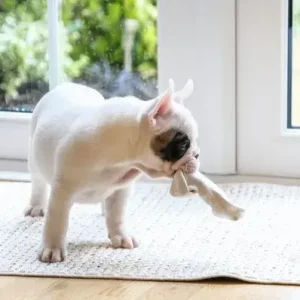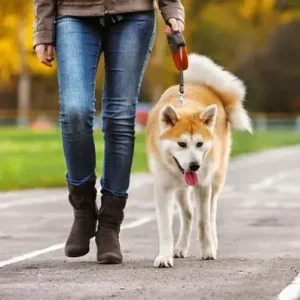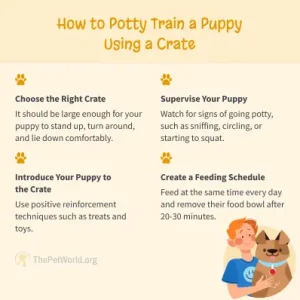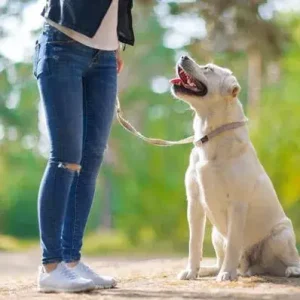What to Avoid
Before diving into corrective actions, it’s equally important to understand what not to do when addressing jumping dog behavior. Avoiding these common mistakes can help your training efforts be more effective and build trust with your dog.
- Rewarding the Jump: Don’t give your dog attention, even negative, when they jump.
- Punishment-Based Methods: Avoid yelling, pushing, or using force. These actions can confuse your dog and damage trust.
Step 5: Train Guests and Family Members
Training your dog isn’t a solo effort. Ensuring that everyone consistently interacts with your dog is essential for maintaining progress and preventing setbacks.
- Instruct Visitors: Ask guests to follow the same rules. For example, have them ignore the dog until it’s calm.
- Family Consistency: Ensure everyone in the household uses the same commands and methods.
Step 4: Use Commands Consistently
Clear and consistent commands help your dog understand what is expected. With regular practice, your dog will learn to respond appropriately and replace jumping with obedience.
Training your dog to respond to specific commands is crucial:
- Cues Like “Off”: Use a firm but calm tone to give the command when they jump.
Phase Out Treats: Gradually replace treats with verbal praise or petting to ensure lasting results.
Step 3: Reward Calm Behavior
Positive reinforcement is key to encouraging good behavior. By rewarding your dog when they remain calm, you reinforce the idea that keeping all four paws on the ground leads to pleasant outcomes.
Reinforce positive actions instead of focusing on the jumping:
- Timing Matters: Reward your dog only when all four paws are on the ground. Use treats on the floor, praise, or a favorite toy as a reward.
- Encourage Calmness: Wait for your dog to settle down before offering any attention.
Step 2: Ignore the Jumping
Sometimes, the best response is no response at all. Ignoring jumping helps your dog understand that this behavior will not get them the attention they seek.
Dogs often jump because they’ve learned it gets them attention. To counteract this:
- Turn Away: If your dog jumps on you, immediately turn your back and avoid making eye contact or speaking.
- Stay Consistent: Ensure everyone in the household follows the same approach to avoid mixed signals.
Step 1: Teach an Alternate Behavior
The first step to curbing jumping behavior is teaching your dog a positive alternative. This redirects their energy and helps establish a calmer way to interact with people.
Replace jumping with a positive action, such as sitting:
- Command Focus: To train a dog not to jump on people, a great strategy is to train your dog to sit as their default behavior. Use treats and verbal praise to reinforce the “sit” command consistently.
- Repetition: Practice the behavior in various settings, gradually increasing the level of distraction.
When your dog learns to sit instead of jumping, you create a foundation for calm and respectful greetings.
Steps for Training Your Dog Not to Jump
Training your dog not to jump on you requires consistency and a clear plan.
Follow these steps to address the behavior problem effectively:
Troubleshooting Tips
If your dog continues to struggle with jumping, don’t lose hope. These additional strategies can help address persistent challenges and refine your training approach.
- High-Energy Breeds: For dogs with high energy levels, increase exercise and mental stimulation to reduce jumping.
- Persistent Behavior: If the issue persists, consider consulting a professional dog trainer for additional support.
Training your dog not to jump requires patience, consistency, and positive reinforcement. By understanding why your dog jumps and following these dog training tips, you can effectively address the behavior and foster a more respectful relationship with your furry friend. Remember, every small victory in training strengthens your bond and helps create a well-mannered companion.

